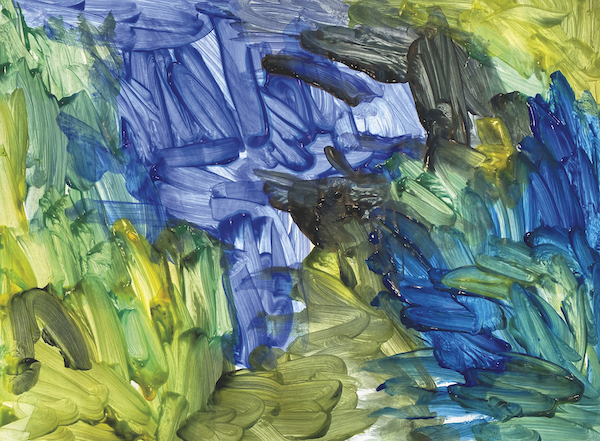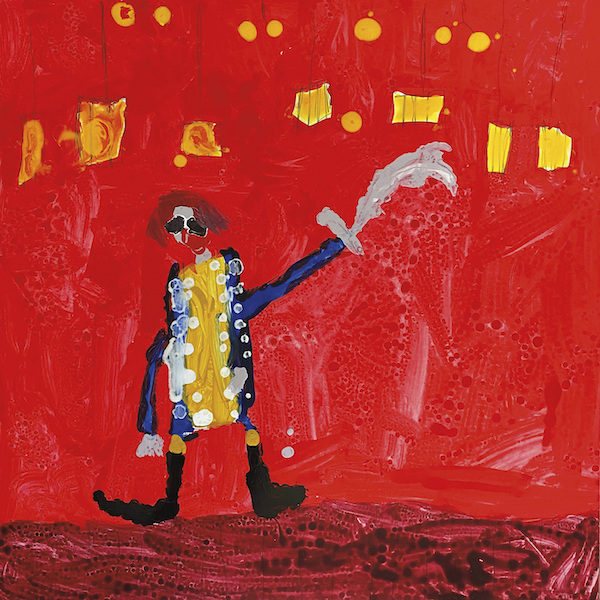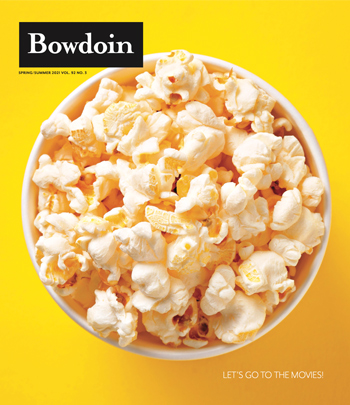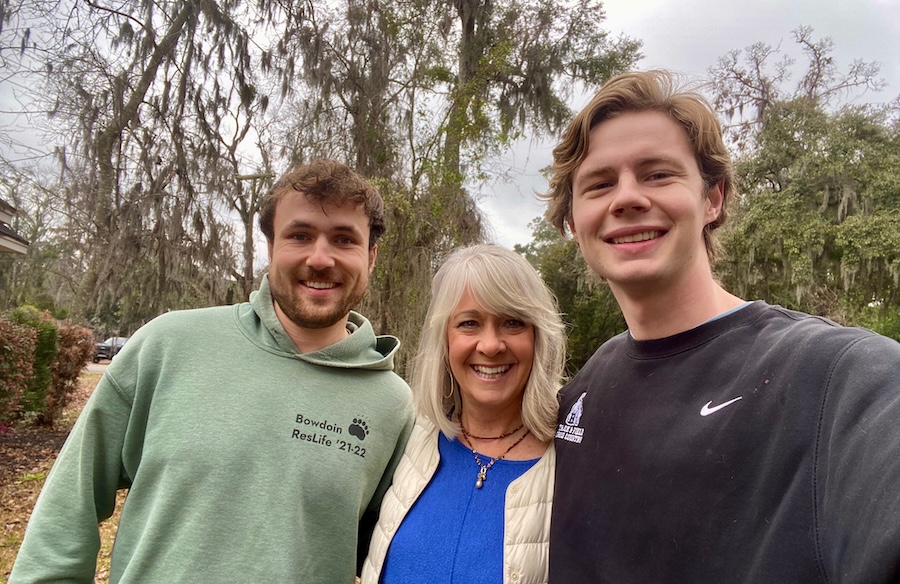First Impressions
By Bowdoin MagazineFOR THE PAST SIX YEARS, we’ve had the joy of watching our children, now ages four and six, create images from both their imaginations and the world around them. It’s been a special experience working alongside them for us, as artists and educators, seeing how their ideas and abilities have grown, and reflecting, from time to time, on the nature of children’s art in general.
Children’s art plays a celebrated but unusual role in the world of creative expression. Many of us delight in the things children create butdon’t expect to find their work in a museum. Likewise, while most parents have an affection for their own children’s art, their appreciation rarely extends to that of others, and they rarely display it in their homes other than on the refrigerator door or the walls of the playroom. This might have to do with yet another paradox of children’s art—while any one example might be thrilling for its inventiveness and originality, there are thousands more just like it being produced every day, all around the world.
Nevertheless, we’ve all seen children’s paintings that could be mistaken, at a glance, for the work of any number of artists from the past hundred years—a relationship that runs both ways. As Picasso famously put it, “It took me four years to paint like Raphael but a lifetime to paint like a child.” The flip side of his remark, of course, is the classic response from the general public that “my kid could have done that.” While it’s understandable that some viewers might prefer artwork that demonstrates high levels of technical skill, for others, children’s art, like a great deal of modern art, is equally or more engaging for its honesty, immediacy, inventiveness, and unfiltered expression.
Just as artists from Picasso’s time to our own have looked to other cultures, the subconscious, and subjective experience in search of truer forms of expression, they have looked to children’s art as well. When pop artist Claes Oldenburg, famous for his oversize sculptures of ordinary objects, was asked where he got his ideas, he answered, “Everything I do is completely original—I made it up when I was a kid.” If modern art has been about anything, it’s been about freedom and truth to oneself—and there are no freer and truer artists in the world than the ones age seven and under.

“Blueberry Bush,” by Reed Wethli, age three. Painted from imagination—having never seen an actual blueberry bush—this painting is a good example of how a child’s painting can remind us of work by more established contemporary artists.
When the pandemic first hit, it took us a while to reconnect with our work in the studio. We were so distracted, overwhelmed, and exhausted by negotiating the pandemic, as well as being physically cut off from our studio spaces outside the home, that we couldn’t bring ourselves to make art or even imagine how we might begin. But we were also spending much more time with our children, and seeing how freely they made their work reinspired our own. We might be at Popham Beach, for instance, watching them draw in the sand, or at home building cardboard spaceships, and somehow their guileless joy in creating things (and not being overly concerned about the outcome) brought us back to our own love of making.
As far as fostering their creative abilities, that’s the one thing we haven’t worried about. Our only ambition has been to provide them with the space, time, materials, and tacit encouragement to let them do as they please. As artists, we’ve been fortunate to have a ready supply of various art materials on hand, so it’s no surprise how much they enjoy trying a new kind of paper, an actual canvas, or the latest paint pens. But this is not to say one needs professional art materials to bring out children’s inner spark. More often than not they’ve been just as happy working with markers, construction paper, and glue sticks on the embarrassing amount of cardboard that has come into our home over the past year.
It’s also been gratifying to see how art projects naturally focus their attention, teaching them by means of their own example about tenacity and the value of making steady progress toward a goal—particularly a goal they didn’t necessarily have in mind before they started. They’re often happy working on their own, of course, but we also like to work alongside them to help them see that making things doesn’t have to stop at age six or seven.
Even if we’re just drawing stick figures, doodling in a margin, or working on a coloring page together, we think it means a lot for them to see their parents working with their hands, making creative decisions, and taking one step at a time, the same way they do.

“Alexander Hamilton,” by Wren Wethli, age six. Ever since the film version of Hamilton came out last summer, Wren has watched it numerous times, listened to the cast recording many times more, and painted numerous images of the characters from the musical, like this one of Hamilton.
Our daughter fell in love with the musical Hamilton last summer and made a series of paintings and drawings of the main characters. Her fascination with all things Hamilton (she wants to visit his grave for her seventh birthday) also points to another aspect of their art-making—we don’t distinguish it from other interests, so that exploring the natural world, gardening, learning about current events, or writing and illustrating stories overlap and work together, rather than as separate activities.
At one point in his career, during a debate about child welfare, Sir Winston Churchill was challenged about the basis for his expertise on children, to which he purportedly replied, “Well, I was one once.” As we all were, of course, but almost everything about our childhood, including the art we made and how it made us feel, is too easily forgotten, except for the faint reflections of it we see in the art of our own children.
Years ago, we were telling our niece, Jane Urciuoli ’23 (age six at the time), that Mark taught drawing and painting at Bowdoin, to which she replied, “Well, I don’t need that kind of class. I’m already an artist.” Which was quite true, as it is for all children. When it comes to kids and creativity, they are as close to being artists as they’ll ever be. Our main job is making sure they don’t forget it. And in a year as challenging as this one has been, making sure that we don’t forget it either.

This story first appeared in the Spring/Summer 2021 issue of Bowdoin Magazine. Manage your subscription and see other stories from the magazine on the Bowdoin Magazine website.



